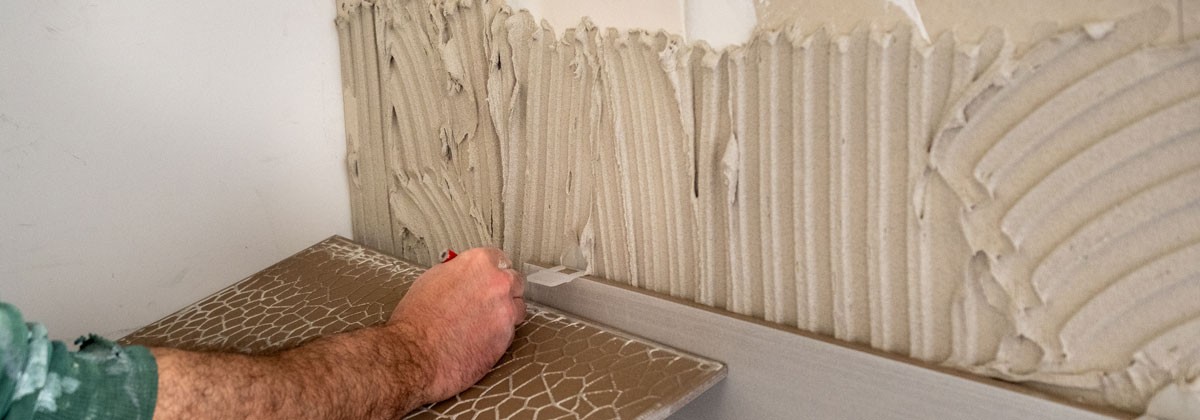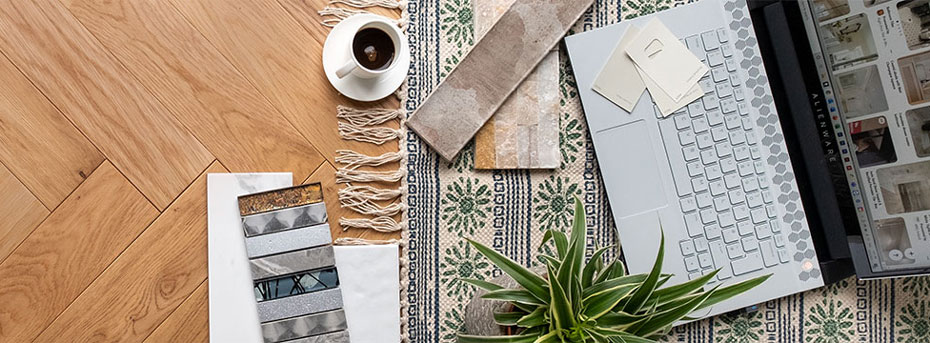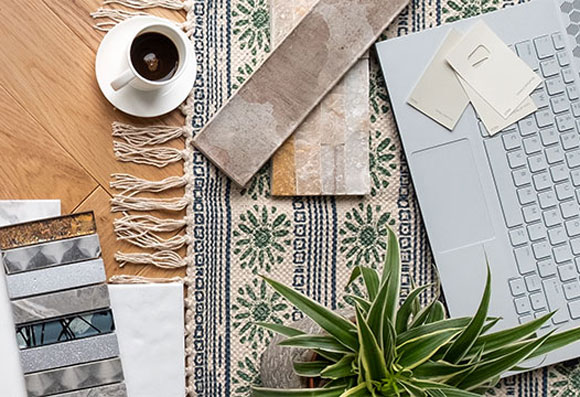
DIY: How to prepare different types of walls for tiling
Tiling preparation for walls is all about making sure your tiles stick. Whether you're tiling onto plaster or dry wall, read on to find out how to do it right.
Gravity dictate that what goes up must come down. When it comes to tiling, Newton’s law can be defied with the right preparation and choice of tile adhesive. Follow this guide to priming and preparing different kinds of wall substrates to ensure your tiles really do stay up.
The benefits of priming:
Don't be tempted to skip the priming step. It's simply not worth risking for the little you'll save on time and money. Here's why:
- Priming improves the bond between the wall and the tile adhesive. It’s particularly useful if the surface of the wall is friable or a little flaky.
- Priming also reduces the risk of chemical reactions that may occur between a cement and certain tile adhesives.
How to prepare walls with gypsum plaster for tiling
The maximum weight when tiling to plaster is 20kg per m² including tiles, adhesive and grout.
Products to use
- Tilers Primer
- Pro-Flex, T-20 or LT-33 Adhesive
- Arc Wall & Floor Grout
How it’s done
- Any paint must be removed prior to tiling.
- Allow at least four weeks for new plaster to dry out completely.
- Ensure the surface is free of any contaminants, loose dust or dirt.
- Polished or shiny plaster must be brushed with a stiff brush.
- Prime the plaster with Tilers Primer diluted 3 parts water to 1 part primer followed by a second neat coat and allow to dry.
How to prepare gypsum plasterboard walls for tiling
Maximum weight when tiling to plasterboard is 32kg per m² including tiles, adhesive and grout.
Products to use
- Arc Tilers Primer
- Pro-Flex, T-20 or LT-33 Adhesive
- Arc Wall & Floor Grout
How it’s done
- Any paint must be removed prior to tiling.
- Ensure the boards are fixed securely to the framework, ideally screwed at 300mm centres. Ensure the surface is free of any contaminants, loose dust or dirt.
- Prime the plaster with Arc Tilers Primer diluted 3 parts water to 1 part primer followed by a second neat coat and allow to dry.
- If the plasterboard is fixed to a timber frame, a flexible adhesive and grout must be used.
Preparing walls with sand/cement render for tiling
Products to use
- Arc Tilers Primer
- Pro-Flex, T-20 or LT-33 Adhesive
- Arc Wall & Floor Grout
How it’s done
- Allow a minimum of two weeks for new render to dry.
- Ensure the surface is free of any contaminants, loose dust or dirt.
- Prime the render with Arc Tilers Primer diluted 3 parts water to 1 part primer and allow to dry.
- If tiling externally, protect the tiled area from water ingress for 24 to 48 hours.
How to prepare concrete-block walls for tiling
Products to use
- Arc Tilers Primer
- Pro-Flex, T-20 or LT-33 Adhesive
- Arc Wall & Floor Grout
How it’s done
- New block work must be left for a minimum of six weeks before rendering or plastering.
- Ensure surface is free of any contaminants, loose dust or dirt.
- Prime the surface with Arc Tilers Primer diluted 3 parts water to 1 part primer and allow to dry.
- If tiling directly to block work, ensure the wall is smooth faced.
- If tiling externally, a flexible adhesive and grout must be used. You will also need to protect the tiled area from water ingress for 24 to 48 hours.
Preparing existing glazed tiles or bricks for tiling
Products to use
- Arc Tilers Primer
- Pro-Flex, T-20 or LT-33 Adhesive
- Arc Wall & Floor Grout
How it’s done
- Ensure existing tiles are firm, stable and securely fixed.
- Ensure surface is free of any contaminants, loose dust or dirt.
- Prime the surface with a slurry coat of Arc Tilers Primer diluted 1 part water to 1 part primer mixed with 1 part adhesive to form a brush on slurry.
- Allow to dry before tiling.
How to prepare plywood or calcium silicate boards for tiling
The approximate maximum tiling weight depends on your board type and thickness. A general guide is 30kg per m² including tiles, adhesive and grout.
Products to use
- Arc Tilers Primer
- Pro-Flex, T-20 or LT-33 Adhesive
- Arc Wall & Floor Grout
How it’s done
- Ensure the boards are fixed securely to the framework, screwed at 300mm centres.
- Ensure the surface is free of any contaminants, loose dust or dirt.
- Prime the boards with Arc Tilers Primer diluted 3 parts water to 1 part primer and allow to dry. Use exterior grade or moisture resistant materials.
How to prepare tile backer boards on a solid/even substrate
Products to use
- Arc Tilers primer
- Pro-Flex, T-20 or LT-33
- Tile backer board
- Jointing tape
- Arc Wall & Floor Grout
How it’s done
- Prime the substrate with Arc Tilers Primer diluted as per label instructions.
- Fix the backer board using a 3-6mm bed of adhesive.
- Use jointing tape over joints.
- Allow the adhesive to cure before tiling.
How to prepare tile backer boards on a rigid framework
The approximate maximum tiling weight, depending on your board type and thickness, is 50kg per m² including tiles, adhesive and grout.
Products to use
- Arc Tilers primer
- Pro-Flex, T-20 or LT-33
- Tile backer board
- Jointing tape
- Arc Wall & Floor Grout
How it’s done
- Ensure the boards are fixed securely to the framework, screwed at 300mm centres.
- Ensure surface is free of any contaminants, loose dust or dirt.
- Use jointing tape over joints.
In the same category
- DIY: How to tank a wet room and prevent leaks from the get-go
- Buyer's guide to underfloor heating: your cosy home starts here
- How to measure walls and floors correctly for tiles and wood floors
- DIY: How to prepare different types of floors for tiling
- DIY: Getting started with the basics of preparing surfaces for tiling


